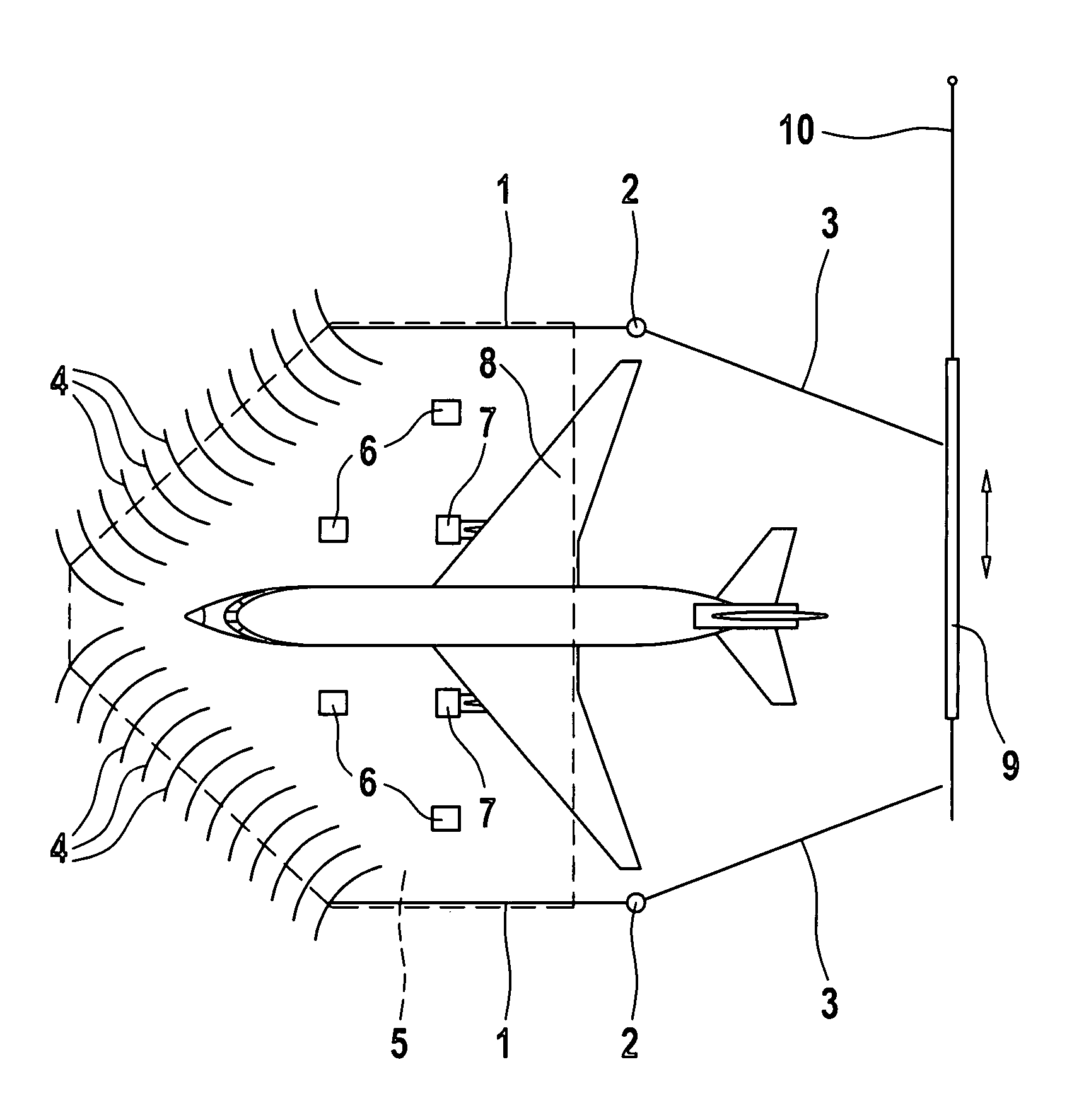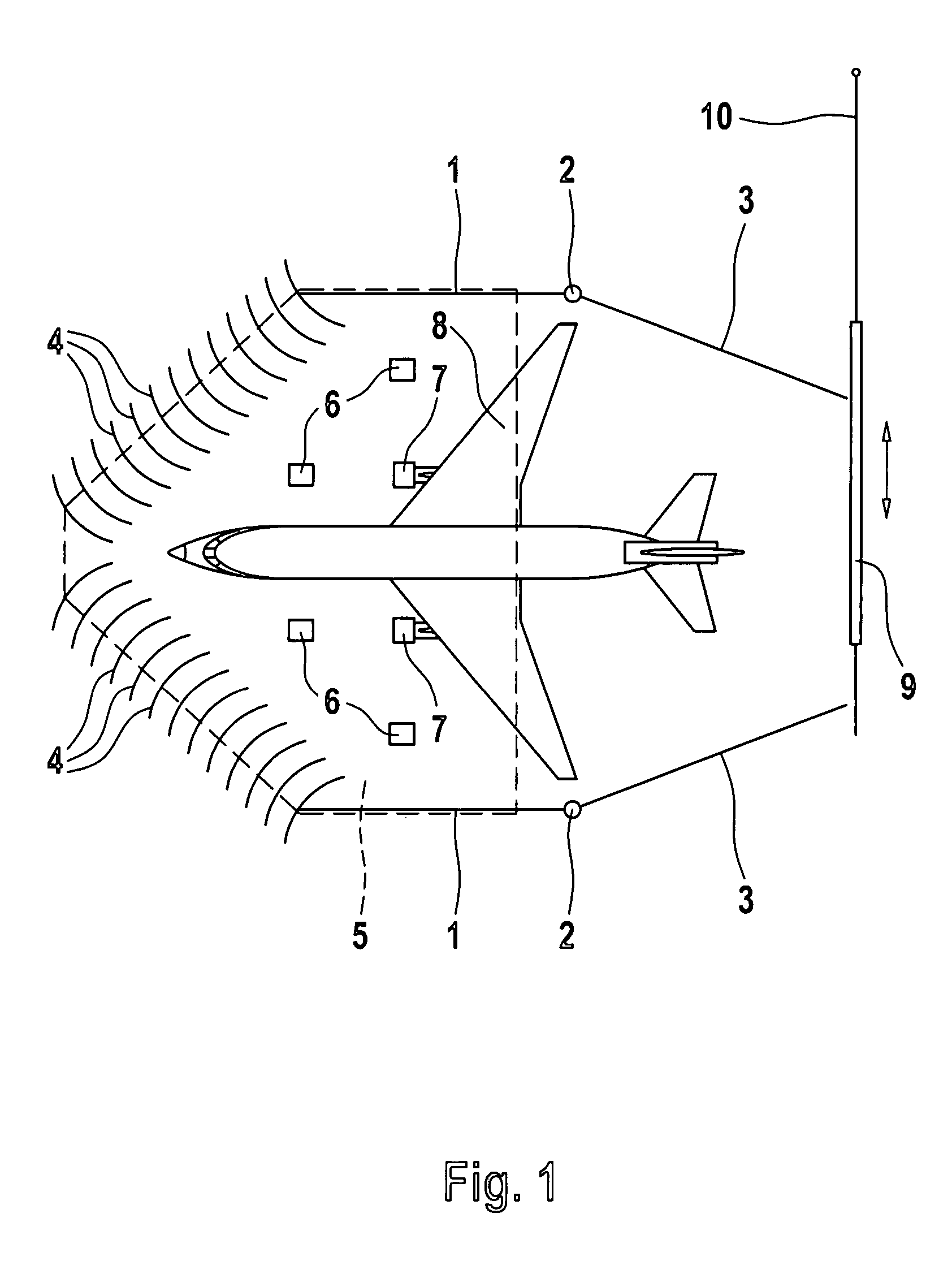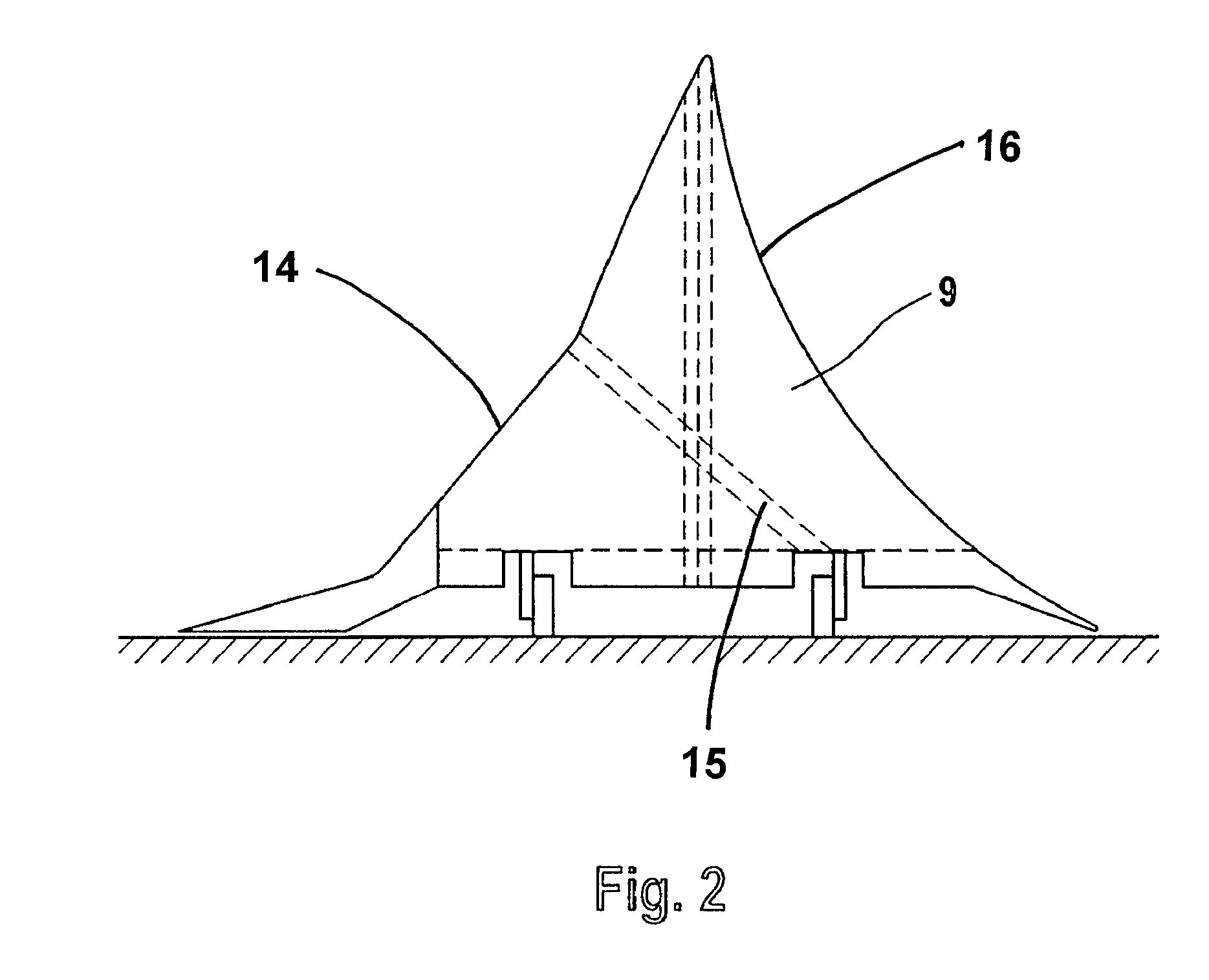Noise insulation device for aircraft
- Summary
- Abstract
- Description
- Claims
- Application Information
AI Technical Summary
Benefits of technology
Problems solved by technology
Method used
Image
Examples
Embodiment Construction
[0027]FIG. 1 shows a first embodiment of the a noise insulation device which has fixed side walls 1, pivotable walls 3, coupled at 2, a group of conducting surfaces 4 and a roof indicated by dashed lines at 5. The roof is supported by means of supports 6 and by the side walls 1 and the conducting surfaces 4.
[0028]The movable walls 3, which can also be guided, for example, in the manner of rolling doors, are shown in FIGS. 1 and 3 in the position in which the engines 7 of the aircraft 8 are to be tested. The aircraft is moved until the wings are in the region below the roof 5. When the aircraft 8 is to be moved out of the noise insulation device or is to be moved into the latter, the walls 3 are pivoted or rolled outward as far as is required.
[0029]The rear opening of the noise insulation device can be closed by a movable backside wall 9 which can be moved on rails 10. This backside wall is shown in FIG. 2 from the side. On both sides, it has covering surfaces 14 and 16 which are sui...
PUM
 Login to View More
Login to View More Abstract
Description
Claims
Application Information
 Login to View More
Login to View More - R&D
- Intellectual Property
- Life Sciences
- Materials
- Tech Scout
- Unparalleled Data Quality
- Higher Quality Content
- 60% Fewer Hallucinations
Browse by: Latest US Patents, China's latest patents, Technical Efficacy Thesaurus, Application Domain, Technology Topic, Popular Technical Reports.
© 2025 PatSnap. All rights reserved.Legal|Privacy policy|Modern Slavery Act Transparency Statement|Sitemap|About US| Contact US: help@patsnap.com



